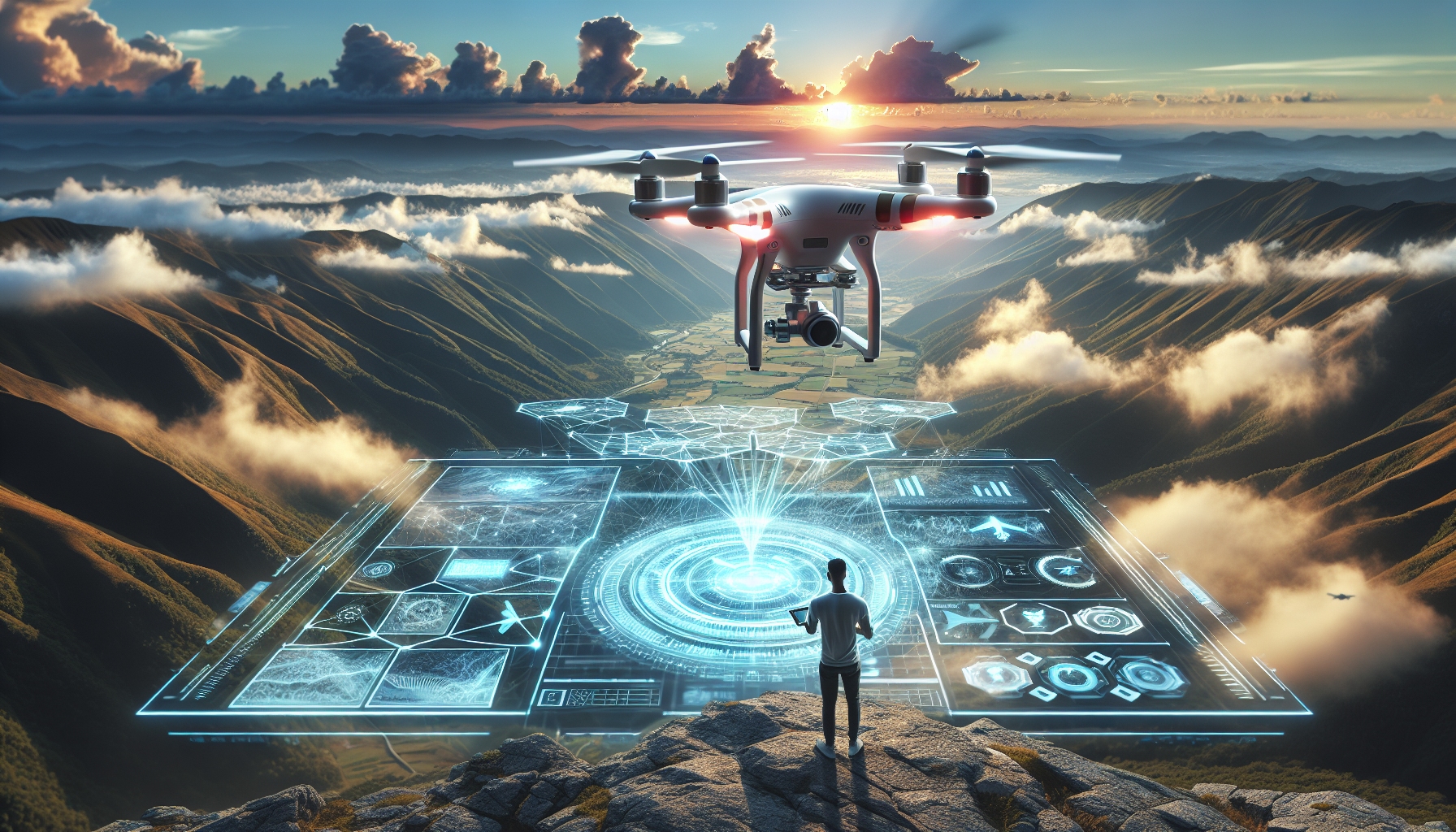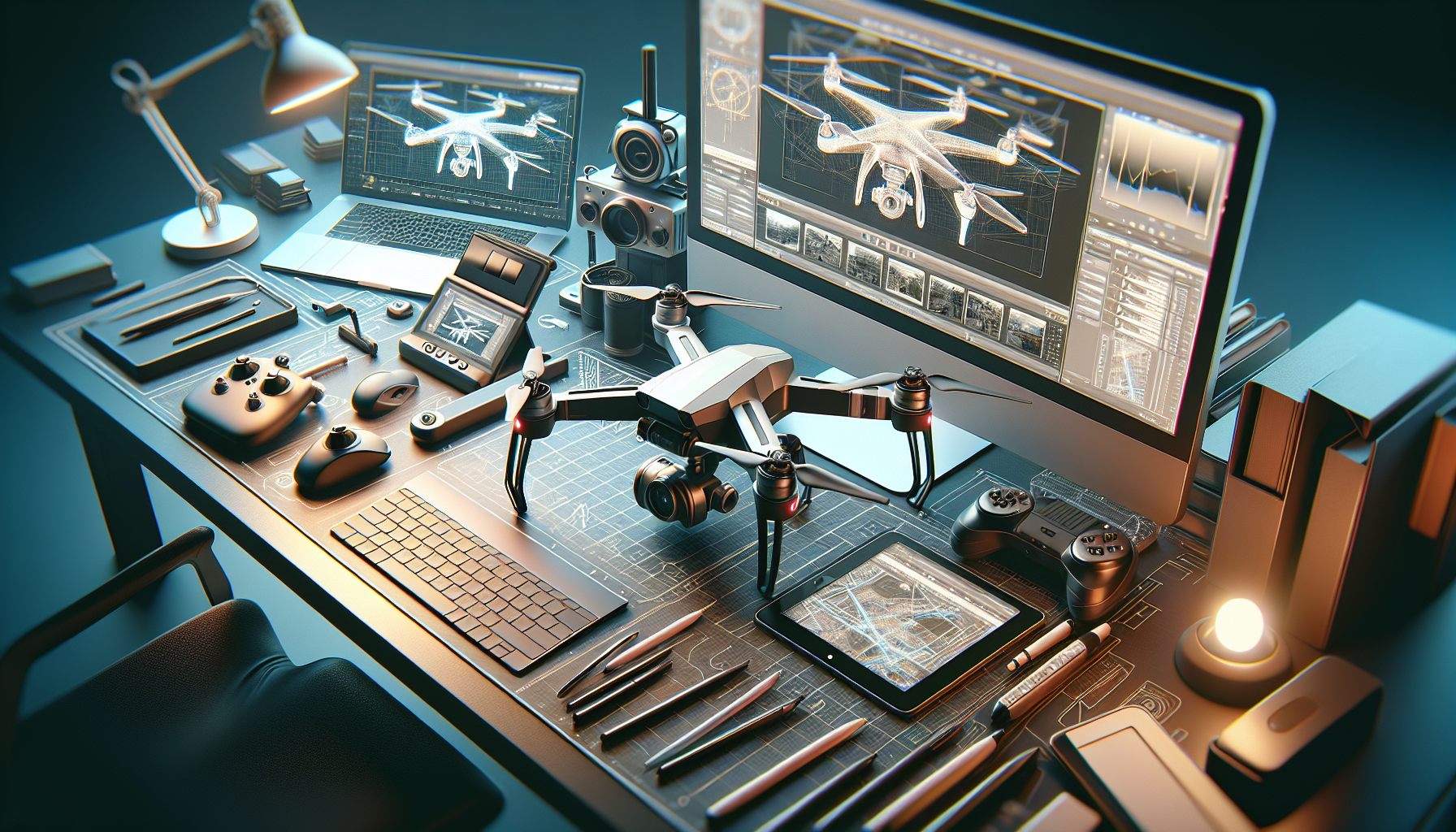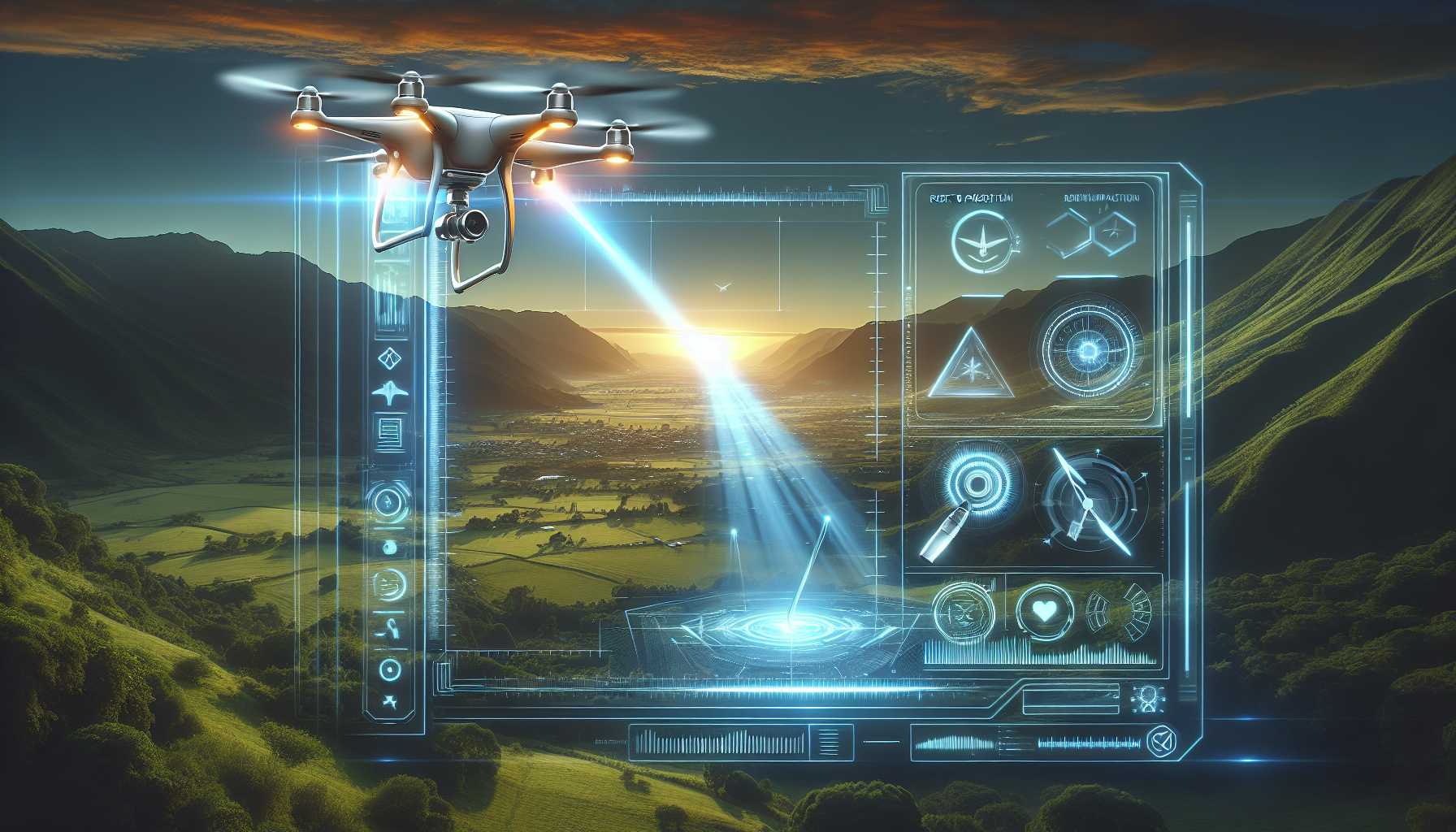In 2025, post-processing drone photos has become an exciting and essential skill for photography enthusiasts in Pakistan. I still remember the first time I used advanced editing tools on my drone shots of the stunning landscapes of Skardu. The ability to enhance your aerial shots with the latest tools has transformed how we capture and share our world. New software offers features that were unimaginable just a few years ago. For instance, AI-driven filters can automatically adjust lighting and colors to perfection. For those looking to dive deeper, the Adobe Lightroom community forum is a great resource for tips and tricks.
Related: The Ultimate Guide to Drone Photography in Pakistan: Capture Breathtaking Aerial Views
Why Post-Processing Drone Photos in 2025 is Essential for Photographers
As a local photographer here in Pakistan, I’ve seen how post-processing has revolutionized drone photography. In 2025, it’s not just an option; it’s a necessity. Drones capture breathtaking landscapes from above, but raw images often lack the vibrancy and detail that truly bring a scene to life. Post-processing allows us to enhance these photos, making them more compelling and professional.
With the latest tools, like AI-powered software, we can now enhance shadows and highlights with just a few clicks. This is a game-changer, especially for someone like me who loves capturing the diverse landscapes of the Swat Valley. I remember a time when I captured a stunning sunrise over the valley. The raw image was good, but it was through post-processing that I was able to bring out the rich colors and intricate details, truly doing justice to the scene.
Another reason why honing these skills is crucial is the increasing demand for high-quality drone images in local tourism and real estate markets. Many clients expect visually stunning images that stand out, and post-processing is the key to meeting these expectations. Whether you’re a seasoned professional or a hobbyist, understanding the basics of image enhancement will set your work apart. For those new to this, a great resource is the Adobe Lightroom tutorials.
Embracing these techniques not only improves the quality of your work but also enhances your storytelling ability. Each edited photo can evoke emotions and tell a story that resonates with your audience, making post-processing an essential skill for photographers in 2025.
Best Software for Post-Processing Drone Photos in 2025

As a passionate drone photographer in Pakistan, I’ve seen how post-processing can transform aerial shots into stunning visuals. Choosing the right software is crucial. In 2025, several tools stand out for enhancing drone photography. One of my go-to options is Adobe Lightroom. It’s versatile and user-friendly, perfect for enhancing colors and correcting exposure. According to Adobe, most professionals use this technique to refine their images.
Another excellent choice is Skylum Luminar Neo. This software uses AI technology to simplify complex editing tasks. I love using its AI Sky Enhancer for my sunset shots. The skies over Lahore have never looked better! If you’re looking for a comprehensive solution, Capture One is also worth considering. Its advanced color grading tools are a favorite among drone enthusiasts in Karachi. It’s particularly useful for those who shoot in RAW format.
For those who prefer free tools, GIMP remains a solid option. It’s highly customizable and has a supportive community, which is a great resource. I often find helpful tips on the GIMP user forums. If you’re new to post-processing, starting with GIMP can be a great way to learn the basics without investing heavily.
Choosing the best software often depends on personal preference and specific needs. Experiment with a few to see which one resonates with your style. Remember, the goal is to make your aerial photos as captivating as possible. Happy editing!
Top Techniques to Enhance Your Aerial Shots in 2025
In 2025, enhancing your drone photography has never been more exciting! With cutting-edge techniques and tools, capturing breathtaking aerial shots is both art and science. One method I personally adore is using AI-powered software for automatic image stitching. This tool seamlessly merges multiple shots into a single, stunning panorama. When I first tried it over the lush landscapes of Swat Valley, the results were mesmerizing.
Another game-changer is the use of advanced HDR techniques. Modern software allows you to merge various exposures into a single, vibrant photo, enhancing details without losing natural light. I recall a trip to the coastal beauty of Gwadar where the HDR made the sunsets look even more magical. For those looking to dive deeper, the National Geographic website offers fantastic resources on HDR photography.
Color grading is also crucial to elevate your aerial images. Today’s tools provide sophisticated options to adjust tones and moods. I often use these tools to highlight the rich textures of the Thar Desert. Experimenting with these settings can radically transform your photos, offering a unique perspective on familiar scenes.
For anyone passionate about drone photography in Pakistan, discovering your chosen existing text can offer inspiration and insights on where to capture these views. Remember, the key is to practice, experiment, and stay curious. With these techniques, your aerial photography is bound to reach new heights in 2025!
Localized Tips for Post-Processing Drone Photos in Pakistan
When it comes to enhancing your aerial shots in Pakistan, understanding the unique local landscapes is key. From the rugged mountains of the north to the expansive deserts in the south, each region presents its own set of challenges and opportunities. I remember the first time I captured the majestic Hunza Valley with my drone—it was breathtaking. However, the varying light conditions made post-processing a bit tricky.
One tip is to use filters to handle the harsh sunlight common in many parts of Pakistan. Polarizing filters can help reduce glare, especially when shooting over water bodies like Lake Saif-ul-Malook. Adjusting the contrast and shadows during editing can also bring out the vibrant colors of the landscape. For those interested in more advanced techniques, consider using software that supports AI-driven enhancements. This can streamline your workflow significantly.
Recently, I’ve started using AI tools that automatically adjust saturation and sharpness, making my editing process much more efficient. If you’re interested in trying such tools, a great resource is the Adobe Creative Cloud website. It offers tutorials specifically tailored for drone photography.
Finally, don’t underestimate the power of local knowledge. Engaging with local photographers in online forums can provide insights into the best times and places to shoot. They often share tips that are invaluable for capturing the true essence of an area. Whether you’re a seasoned photographer or just starting out, these strategies will help you craft stunning images that truly reflect Pakistan’s diverse beauty.
Future Trends in Drone Photo Editing and Tools

As drone photography continues to evolve, so does the art of post-processing these stunning images. Living in Pakistan, I’ve witnessed first-hand the breathtaking landscapes captured by drones, from the vibrant cityscapes of Karachi to the serene valleys in the north. With 2025 on the horizon, exciting trends in drone photo editing are emerging that are sure to enhance your aerial shots with the latest tools.
One of the most promising developments is the use of artificial intelligence. AI-powered editing tools can now automatically enhance images, offering solutions for noise reduction, color correction, and even sky replacement. This technology is a game-changer for those of us who want professional results without spending hours tweaking settings. For example, a recent trip to the Thar Desert left me with some incredible sunset shots, which I quickly enhanced using an AI tool to bring out the deep reds and oranges.
Moreover, drone editing software is becoming more intuitive. Apps are now integrating features that allow seamless editing directly on your smartphone or tablet. This means you can capture, edit, and share your photos almost instantly, whether you’re enjoying a picnic at Lake Saif-ul-Malook or exploring the bustling streets of Lahore. If you’re looking to dive deeper into these tools, a great resource is the Adobe's official blog.
Another trend is the growing community around drone photography. Online platforms and local groups in Pakistan are popping up, offering workshops and tutorials. Connecting with fellow enthusiasts not only improves your skills but also provides inspiration for your next photo project.
Conclusion
As we wrap up our exploration of how to enhance your aerial shots with the latest tools in 2025, it’s clear that technology has transformed drone photography. This journey reminds me of a recent project near the majestic Hunza Valley. The stunning landscapes were captured from above, and the post-processing made them even more breathtaking. Using advanced editing software, I was able to highlight the intricate details of the terrain and the vibrant colors of nature.
Today’s tools offer incredible features that make it easier than ever to elevate your drone images. For instance, AI-driven software now automatically adjusts exposure and contrast with just a click. It’s a far cry from the manual adjustments we relied on a few years ago. One time, while editing a series of sunset shots, I discovered how AI could seamlessly enhance the colors, making them pop without looking unnatural.
For those in Pakistan, local communities are increasingly sharing tips and tricks through online forums. A great resource is the National Geographic website for anyone looking to get started. I’ve found that engaging with these communities not only improves my skills but also offers a chance to share experiences and learn from others.
In conclusion, staying updated with these innovations is crucial. By embracing cutting-edge technology, we can continue to capture the beauty of our landscapes and share them with the world. Whether you’re a seasoned photographer or a beginner, the right tools and techniques can make all the difference in post-processing your drone photos in 2025.
Continue Exploring
Ready to discover breathtaking vistas? Dive into the world of aerial beauty with our guide on the most stunning drone photography spots in Pakistan.
Frequently Asked Questions
What are the most effective post-processing techniques for drone photos in 2025?
In 2025, the most effective post-processing techniques for drone photos include AI-powered image enhancement, advanced HDR merging, and adaptive noise reduction. These techniques help to enhance image clarity, balance exposure, and reduce unwanted noise, ensuring your aerial shots are visually stunning.
Which new software tools are recommended for editing drone photography in 2025?
Some of the recommended software tools for editing drone photography in 2025 include Adobe Photoshop with AI-driven features, Skylum Luminar Neo with its AI sky replacement, and DJI’s own enhanced editing suite integrated with real-time 3D modeling capabilities. These tools offer innovative features that simplify complex editing tasks and enhance creative possibilities.
How can I improve the quality of my drone photos using AI tools in 2025?
To improve the quality of your drone photos using AI tools in 2025, focus on utilizing AI for automated scene detection, dynamic range optimization, and intelligent sharpening. These AI-driven features analyze each photo and apply precise adjustments to enhance colors, details, and overall image quality, making your aerial shots more captivating.


Leave a Reply